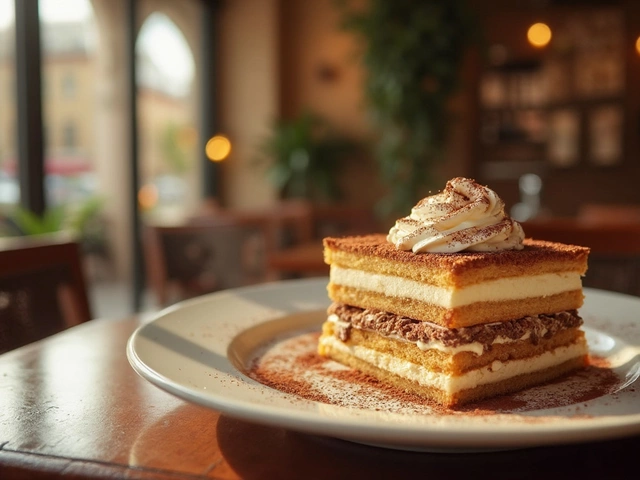Portuguese Macaron – Easy Recipe & Tips
If you love the soft, chewy bite of a French macaron but want a twist from the Iberian side, Portuguese macarons are the answer. They keep the classic almond‑based shell but often use a sweeter, richer filling inspired by pastel de nata or local jams. The result is a bite‑size treat that feels familiar yet has a distinct Portuguese flavor profile. Below you’ll find everything you need to make these treats at home without fancy equipment.
Ingredients You’ll Need
For the shells, gather 100 g almond flour, 150 g icing sugar, 90 g egg whites (about 3 large eggs), and a pinch of sea salt. Make sure you sift the almond flour and icing sugar together — no lumps means smoother shells. For the filling, a simple custard or a spoonful of orange‑infused jam works great; both echo the citrus notes you find in many Portuguese desserts. Optional: a splash of vanilla extract or a pinch of cinnamon for extra warmth.
Step‑by‑Step Method
1. Whisk the egg whites until they form soft peaks, then gradually add the sugar while continuing to whisk until you reach glossy, stiff peaks. 2. Gently fold the sifted almond‑sugar mix into the meringue in two or three additions. The batter should flow like lava but hold its shape when you lift the spatula. 3. Transfer the batter to a piping bag and pipe 1‑inch circles onto a parchment‑lined baking tray. Tap the tray a few times to release any air bubbles. 4. Let the shells rest at room temperature for 30‑45 minutes; they should form a thin skin you can touch without it sticking. 5. Preheat the oven to 150 °C (300 °F) and bake for 12‑15 minutes. The shells should be firm on the outside but still slightly soft inside.
While the shells cool, prepare your filling. If you go with custard, whisk together 200 ml milk, 2 egg yolks, 30 g sugar, a bit of cornstarch, and a zest of lemon. Heat gently until thick, then chill. If you prefer jam, simply warm your favorite orange or quince jam until pourable.
Once both parts are ready, pair shells together and pipe a dollop of filling onto the flat side. Press gently to sandwich. Let the assembled macarons sit for at least an hour before serving; this helps the flavors marry and the texture settle.
Quick storage tip: keep them in an airtight container in the fridge for up to three days. Bring them to room temperature before eating for the best texture. If you want a crunchy twist, sprinkle a pinch of toasted almond slivers on top just before sealing.
With these steps, you can enjoy Portuguese macarons anytime—whether at a tea party, as a gift, or just because you crave something sweet and slightly exotic. Experiment with fillings like shredded coconut, sweetened cheese, or a splash of Port wine reduction to keep your creations exciting. Happy baking!

How to Pronounce 'Macaron' in Portuguese: A Sweet Linguistic Guide
In this article, we explore the pronunciation of 'macaron' in Portuguese, offering a sweet and playful linguistic guide to this delightful pastry. Learn fascinating facts about macarons, dive into their history, and discover pronunciation tips that will make you sound like a pro. Whether you're planning a trip to Portugal or simply want to improve your culinary vocabulary, this article has got you covered. We’ll also unravel some common misconceptions about the French and Portuguese interpretations of this confectionery delight.
View More




